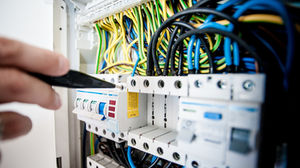RCD Testing Requirements

It is now accepted practice that all power and applicable lighting circuits require residual current device protection but understanding the RCD testing requirements, frequency and procedure can be somewhat confusing for new owners or facility managers.
This article will focus on 'fixed' RCD's, that is RCD's that are installed at a switchboard or at an outlet, rather than portable RCD's.
Background
It is a requirement of Safe Work NSW, that all installed RCD's must be tested regularly by competent personnel to ensure they operate within the appropriate limits and therefore provide the necessary level of protection. It is also required that a testing record be kept by the owner/manager of the workplace, until the next subsequent test or the equipment is replaced.
Safe Work NSW then refers to the Australian Standards for RCD testing frequency, procedures and parameters. For convenience the Australian Standards have categorised RCD's with 30mA sensitivity to be 'Type 1' and 10mA sensitivity to be 'Type 2' and the RCD testing procedures for each are outlined below.
RCD's come in various types, curves and sensitivity current ratings. While it is important to understand the difference, in majority of commercial and industrial applications the RCD will be of Type AC, C-Curve @ 30mA sensitivity.
RCD's with sensitivity of 10mA are occasionally seen in commercial situations deemed to be at "increased risk" and examples may include kindergartens/childcare, aged care or hospitals. This change is sensitivity however only changes the testing result parameters whilst the frequency and testing requirements remain the same.

"Corsence uses the latest available test equipment"
RCD Testing Requirements
So... what are the testing requirements?
There a two required tests for an RCD, referred to as the pushbutton test and trip time test. Corsence technicians also test the trip current to ensure the RCD tripping sensitivity is with the equipment parameters (eg < 30mA).
- Pushbutton Test: Performed by manually operating the push button
- Trip Time Test: By using a calibrated RCD tester and performing 2 tests at 0 & 180 deg
AS/NZS 3760:2001 specifies that all fixed RCD's in a commercial building, factory or office environment require pushbutton testing every 6 months while trip time testing is completed annually.
It is common practice in the industry to refer to RCD testing as 6 monthly testing (pushbutton test) and annual testing (trip time test & pushbutton test) to ensure each of the tests are performed at the required intervals.
AS/NZS 3017:2007 outlines the RCD operation parameters and requirements when testing an RCD. This is where some confusion is generated around the maximum tripping time of a (Type 1) RCD and it all comes down to the residual test current, which is sometimes documented in a few different formats, as shown below:
RCD's tested at 1xIn | 30mA | 100 % - must trip within 300ms
RCD's tested at 2xIn | 60mA | 200 % - must trip within 150ms
RCD's tested at 5xIn | 150mA | 500 % - must trip within 40ms
Different manufacturers RCD test equipment will provide one or a number of residual test currents and it is important to recognise that as long as the RCD trip time falls within these limits when tested with the appropriate test current it is deemed a PASS. It is also required under AS/NZS 3017:2007 that the accuracy of the tester to be +- 8ms so it goes without saying that regular calibration of the RCD tester should be upheld and copies of the calibration certificate should be readily available.
The Takeaway...
Ensure your RCD's are tested in accordance with the required testing frequency and specifications in the Australian Standards
Avoid confusion around the operational testing times of your RCD's and understand different test results
Ensure the RCD tester used is calibrated and the certificate is readily available
Keep testing results on record until the next subsequent test
Only engage experienced and qualified contractors to perform your RCD testing
For more details surrounding any of the above information or if you would like a quotation for your RCD testing then please email us at connect@corsence.com














